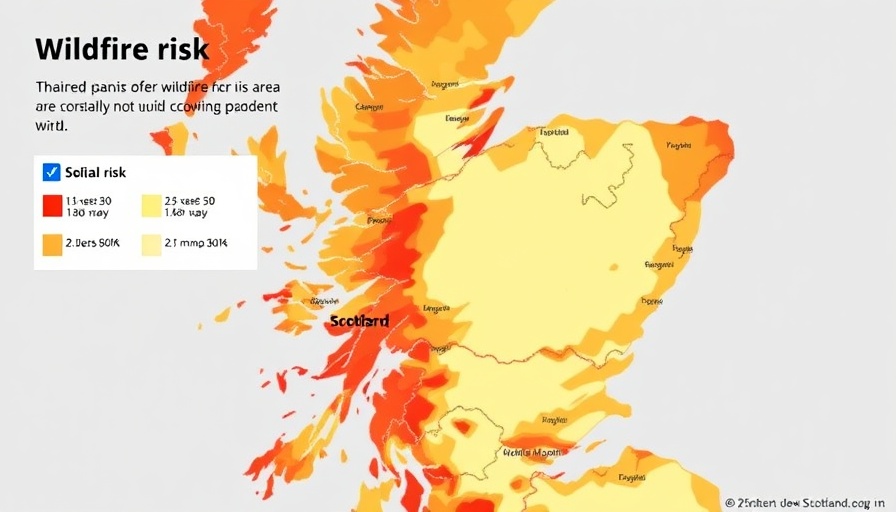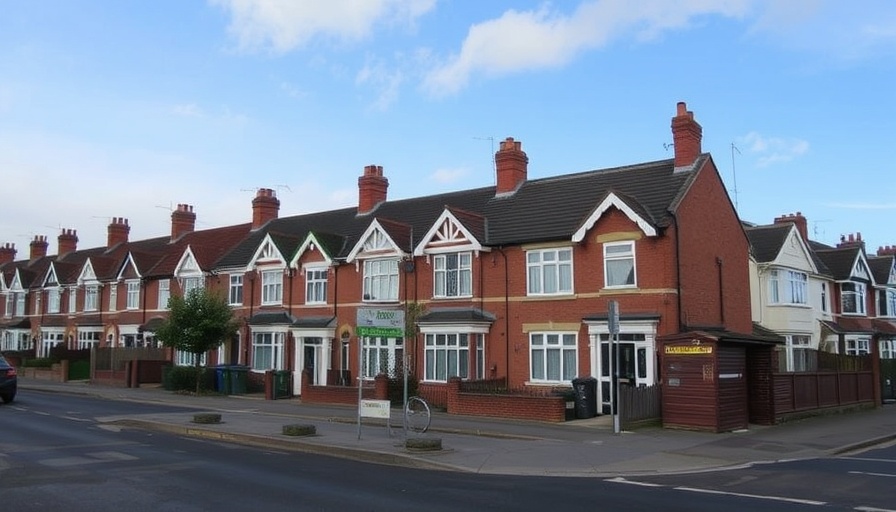
Understanding the Current Wildfire Risk in Southern Scotland
This week, southern Scotland faces a 'very high' risk of wildfire, prompting urgent advisories from the Scottish Fire and Rescue Service (SFRS). As warmer, drier weather settles in, the risk of wildfires looms larger than ever, especially considering the dangerously dry conditions prevalent in the region. Area Commander Michael Humphreys emphasizes the importance of public awareness during this critical period.
The Importance of Fire Prevention
Wildfires can severely damage not only natural landscapes but also disrupt local communities. Communities in rural areas, where potential fire hazards are high due to dry vegetation and human activity, are particularly vulnerable. The SFRS is reminding everyone that simple precautions can significantly mitigate the risk of wildfires. Potential actions include avoiding outdoor fires and following the Scottish Outdoor Access Code, designed to protect both nature and human life.
Past Incidents: Lessons Learned
Historically, wildfires in Scotland have had devastating consequences. The summer of 2018 saw significant blazes across the country, eating through thousands of acres of woodland and farmland. This season, as conditions are reminiscent of those dry summer months, the call for caution is urgent. The aftermath of such wildfires often leaves communities to deal with the ecological and economic consequences—an aspect that homebuyers and property investors should be acutely aware of when choosing real estate in these regions.
Financial Impact on Property Market
For homebuyers, sellers, and investors, understanding the property market's nuances during wildfire season is crucial. A wildfire not only threatens physical property but also influences market perception. Properties in high-risk areas may decrease in value, while homes in safer zones could see a rise in demand. Potential investors must consider environmental risk assessments as part of their due diligence process, ensuring they are making informed decisions about their acquisitions.
Future Preparedness: Mitigation Strategies
Understanding wildfire dynamics and implementing preventive measures can buffer against potential losses. Homeowners in vulnerable areas are advised to create defensible spaces around their properties—removing dead vegetation and ensuring their homes are equipped with fire-resistant materials. Such proactive measures can protect personal property while enhancing community resilience against increasingly frequent wildfires.
A Call for Community Responsibility
As the community navigates this heightened wildfire risk, the responsibility rests with every individual to exercise caution and promote awareness. Engaging in local discussions about environmental safety not only fosters community spirit but also empowers residents to take preventative steps. Awareness campaigns and community workshops can further enhance understanding of best practices for preventing wildfires.
In conclusion, as the days grow warmer and drier, the call to action is clear. Residents and visitors alike must prioritize safety and adherence to fire prevention protocols. By fostering community awareness and responsible action, we can protect our beautiful landscapes for generations to come.
 Add Row
Add Row  Add
Add 





 Add Row
Add Row  Add
Add 








Write A Comment